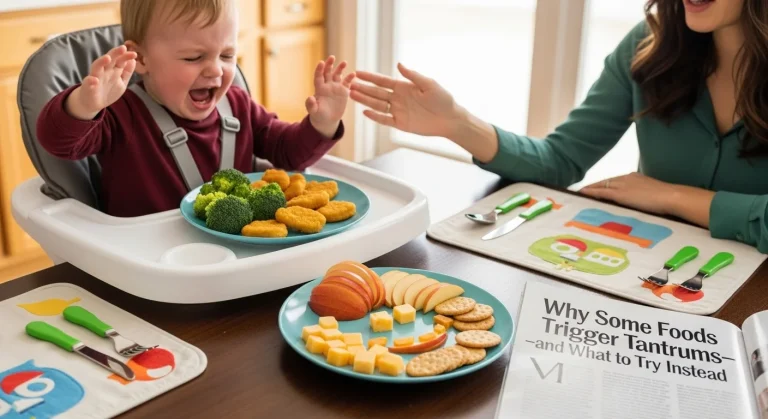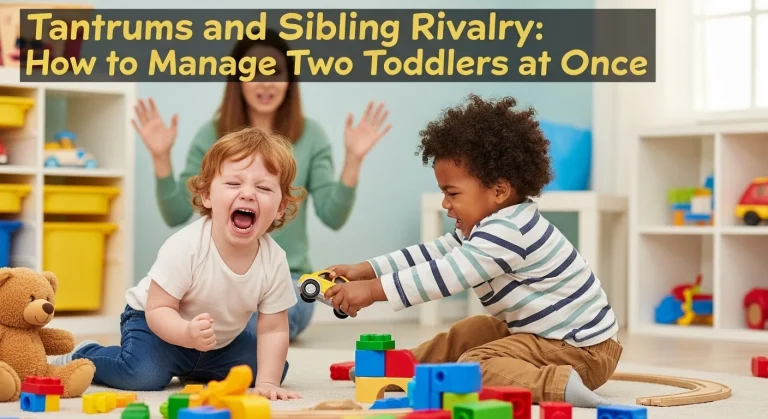Toddler Language Development Milestones Every Mom Should Know
As a mom, one of the most exciting—and sometimes nerve-wracking—parts of raising a toddler is watching their language skills grow. Every new word, sound, or attempt to express something feels like a milestone. But how do you know if your toddler is on track? What should you expect month by month? Let’s dive into the key language development stages, signs to look out for, and simple ways to encourage your toddler’s communication from home.

🧠 Why Language Development Matters So Much
Language isn’t just about words—it’s the foundation for learning, social connection, and emotional development. According to the Centers for Disease Control and Prevention (CDC), children who develop strong communication skills early in life tend to perform better in school and form deeper relationships.
In short, supporting your toddler’s speech development now lays the groundwork for future success.

📅 Language Milestones by Age
While every child is different, most follow a general timeline when it comes to learning to speak. Here’s a helpful breakdown by age range:
👶 12–18 Months: The First Words Stage
- Says simple words like “mama,” “dada,” “ball,” or “uh-oh”
- Understands basic commands like “no” or “come here”
- Points to objects or pictures when named
- Babbles in a speech-like way using different tones
💡 Mom Tip: Name everything you see during your day together—“Here’s your spoon,” “Look at the bird!”—to boost your toddler’s vocabulary.
🧒 18–24 Months: The Word Explosion Begins
- Vocabulary may reach 50+ words
- Starts combining two words: “More milk,” “Mama go”
- Repeats words heard in conversations or on TV
- Understands simple questions and follows one-step directions
🔍 Fact: According to the American Speech-Language-Hearing Association (ASHA), toddlers typically learn 1 new word every waking hour at this stage!
👧 24–30 Months: Short Sentences & Questions
- Uses 2–4 word phrases regularly
- Begins asking questions like “What’s that?”
- Follows two-step instructions: “Pick up the toy and give it to me.”
- Uses pronouns like “I,” “me,” and “you”
📝 Mom Insight: Encourage your toddler’s curiosity by always answering their questions—even if they ask “why” 50 times a day!
🧠 30–36 Months: Clearer Conversations
- Vocabulary grows to 200+ words
- Uses complete sentences: “I want my teddy bear.”
- Understands concepts like in/on, big/small
- Speech is clearer, though may still mispronounce some sounds
📊 Stat: By age 3, about 75% of what a toddler says should be understood by strangers.

🚩 Signs of a Speech Delay
While children develop at different paces, some signs may indicate a delay that’s worth discussing with a pediatrician or speech therapist:
- Not saying any words by 16 months
- Doesn’t point or gesture by 12 months
- Cannot follow simple instructions by 2 years
- Very limited vocabulary or inability to form two-word phrases by 2.5 years
- You (or strangers) struggle to understand them by age 3
🩺 Tip: Trust your gut. If something feels off, it’s okay to get an evaluation—it’s better to address concerns early.

🗣️ Simple Ways to Boost Toddler Speech at Home
You don’t need fancy apps or tools. Just a few intentional daily habits can make a big difference.
📖 1. Read Every Day
Reading together builds vocabulary, comprehension, and memory. Choose colorful books with simple words and ask questions like “What’s that?” or “Where’s the dog?”
🎵 2. Sing Songs & Nursery Rhymes
Songs help toddlers learn rhythm, sounds, and patterns. Repetitive tunes like “Wheels on the Bus” or “Itsy Bitsy Spider” encourage speech and memory.
💬 3. Talk All Day Long
Narrate your daily routine: “Now we’re washing hands. Look! Bubbles!” The more language your toddler hears, the more they absorb.
🎭 4. Use Pretend Play
Act out little stories with stuffed animals or dolls. “Bear is hungry. Let’s feed him!” helps children understand cause-and-effect and conversation flow.
🎯 5. Avoid Baby Talk
Use real words and clear pronunciation. It might be cute to say “wawa,” but using the word “water” helps your toddler learn correct language structure.

👩👦 My Personal Experience as a Mom
When my son was 18 months, he only said “mama” and “ball,” while others his age were stringing two-word phrases. I panicked. But after speaking to our pediatrician, we started reading more, talking constantly, and playing interactive games.
By 2.5 years, he caught up completely—and now I can’t get him to stop talking! 💬
The journey isn’t about comparison—it’s about connection.
📚 Expert-Backed Resources
If you want to explore further, these are helpful:
- CDC Milestone Tracker App
- ASHA’s Speech Development Guide
- Zero to Three – Tips for early childhood development
💡 Final Thoughts
Language development isn’t a race—it’s a process. Celebrate every new sound, every attempt to speak, and every question they ask (yes, even the 100th “why”). Your support, presence, and words shape how your toddler learns to communicate with the world.
Remember: You are their first and best teacher. ❤️







